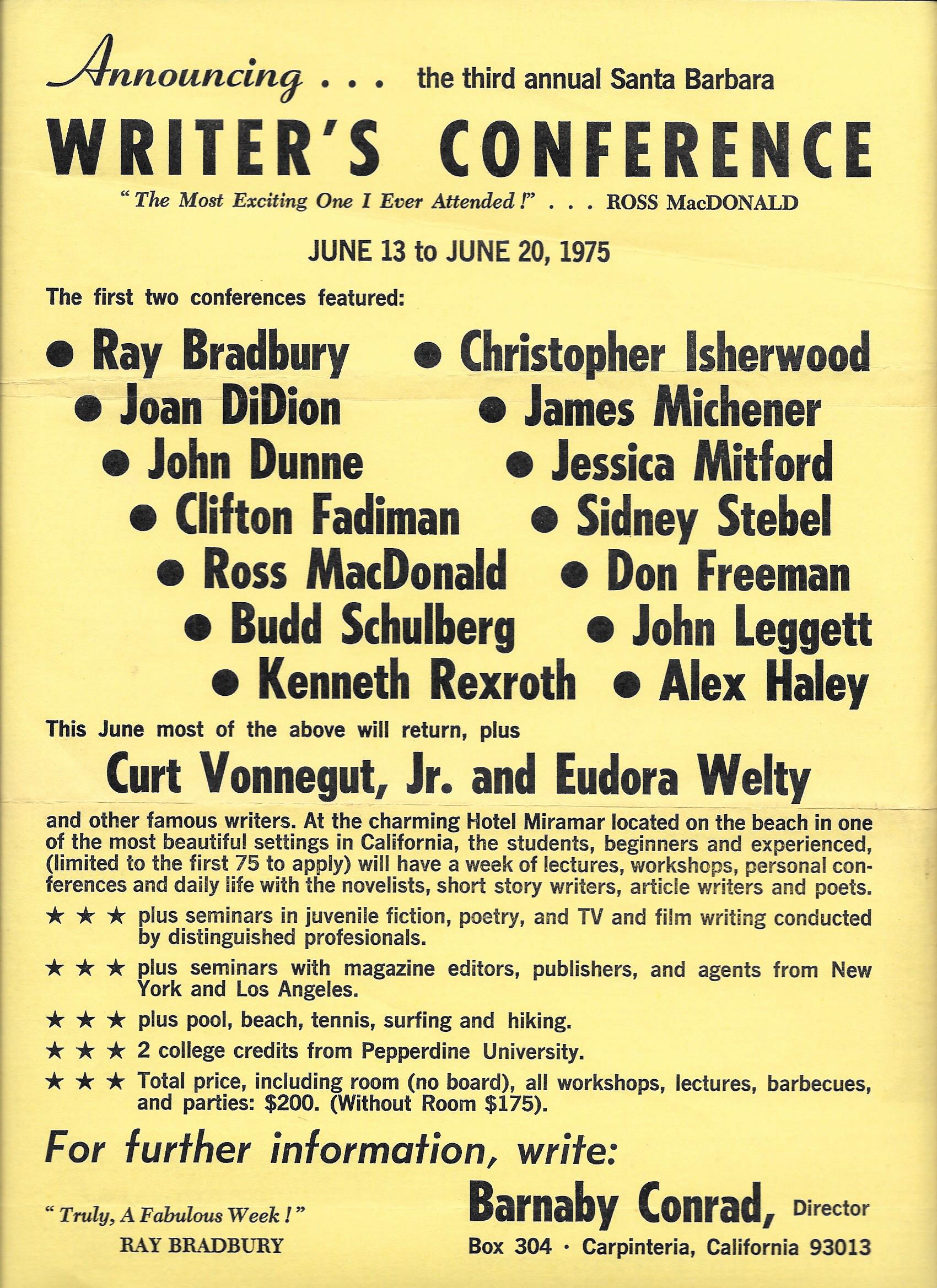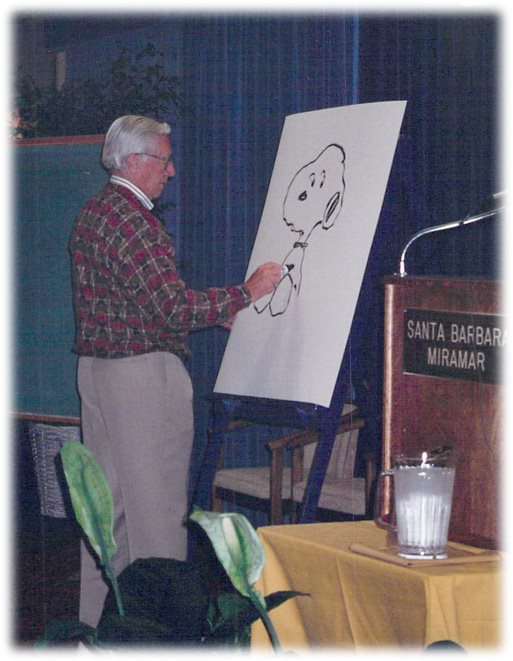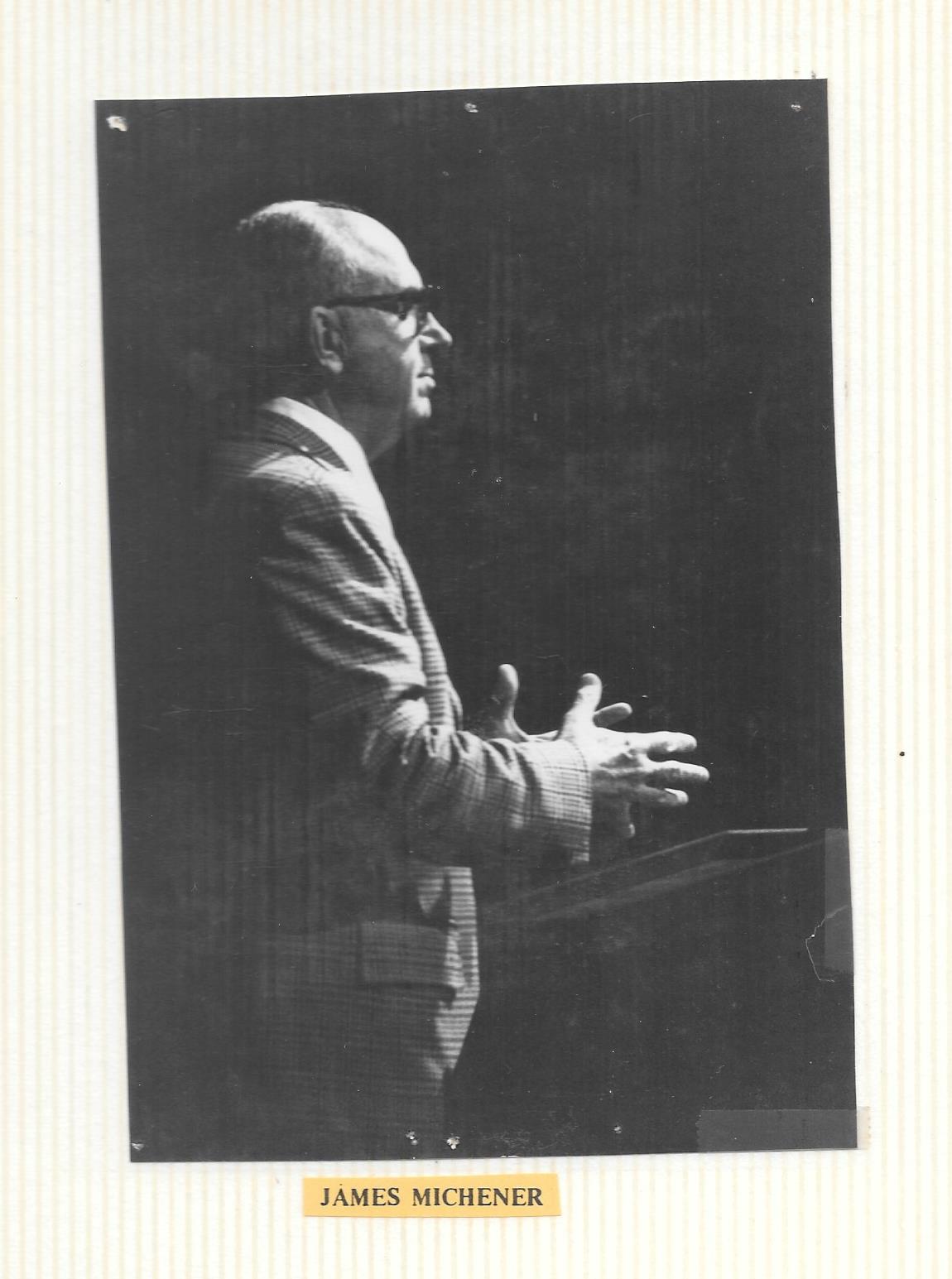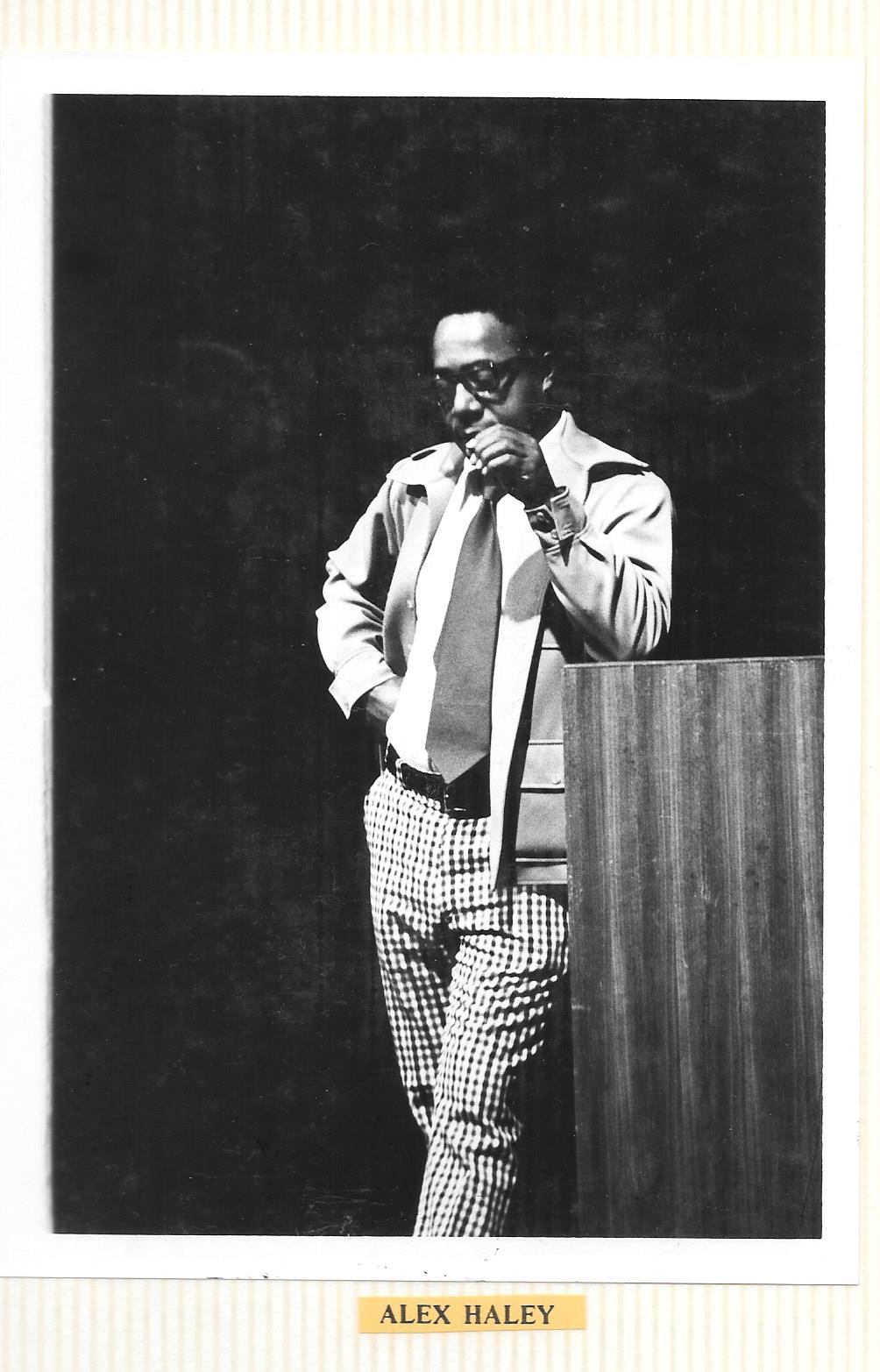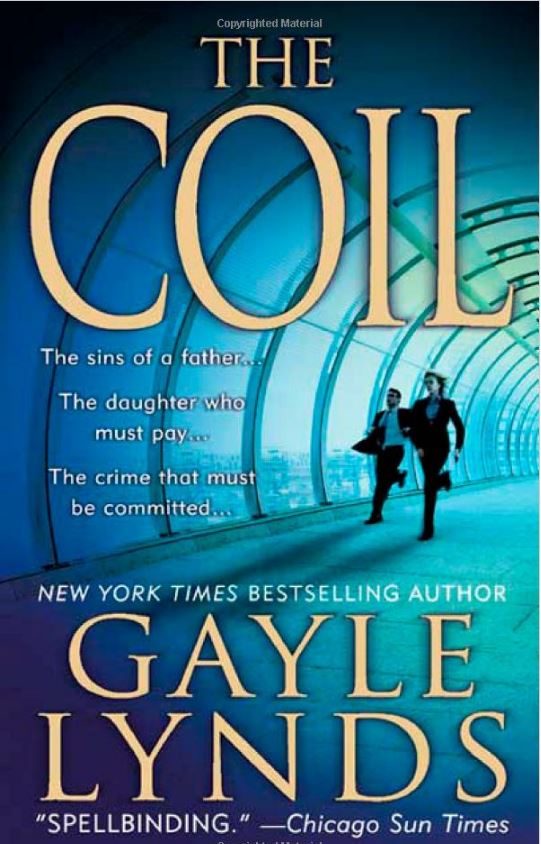An excerpt from the Santa Barbara Writers Conference Scrapbook by Armando Nieto, Mary Conrad, and Matt Pallamary: In 1975 the Santa Barbara Writers Conference opened for the first time at the Miramar Hotel in Montecito, just South of Santa Barbara, beginning a twenty-five year Santa Barbara literary tradition. It was the first year that Charles (Sparky) Schulz came to the SBWC and not only decided to stay the entire week, but became a fixture of the conference, returning and staying for the entire week all the way through to the end of his life in the year 2000. With Sparky's blessing, his Peanuts character Snoopy became the SBWC logo and official conference mascot, and Sparky gave generously of his time and characters without thought of compensation for the next twenty-five years.
The Last SBWC Banner hanging in Barnaby Conrad's art studio
The SBWC became synonymous with Snoopy typing away on the roof of his doghouse, set on the canvas of a sea of blue roofed cottages glimpsed from the 101 Freeway against the backdrop of the Pacific Ocean. It was the SBWC at the Miramar Hotel era.
How it came to be held there was because of the Cate School's new headmaster's unwarranted concerns about profitability. Mary Conrad had enough of the school's politics and contacted James Gawzar, a friend whose father owned the Miramar Hotel.
“Can we hold the conference there?” Mary asked.
“Sure,” came the answer from the elder William Gawzar.
With those prophetic words the Miramar Hotel became home to the SBWC for a quarter of a century, and birthed more stories than can be included in this volume of the history of the SBWC, or which the lawyers will allow us to relate, but it would not be a true reflection of the history if the book did not contain a generous sprinkling of the tales birthed and passed on along the way.
